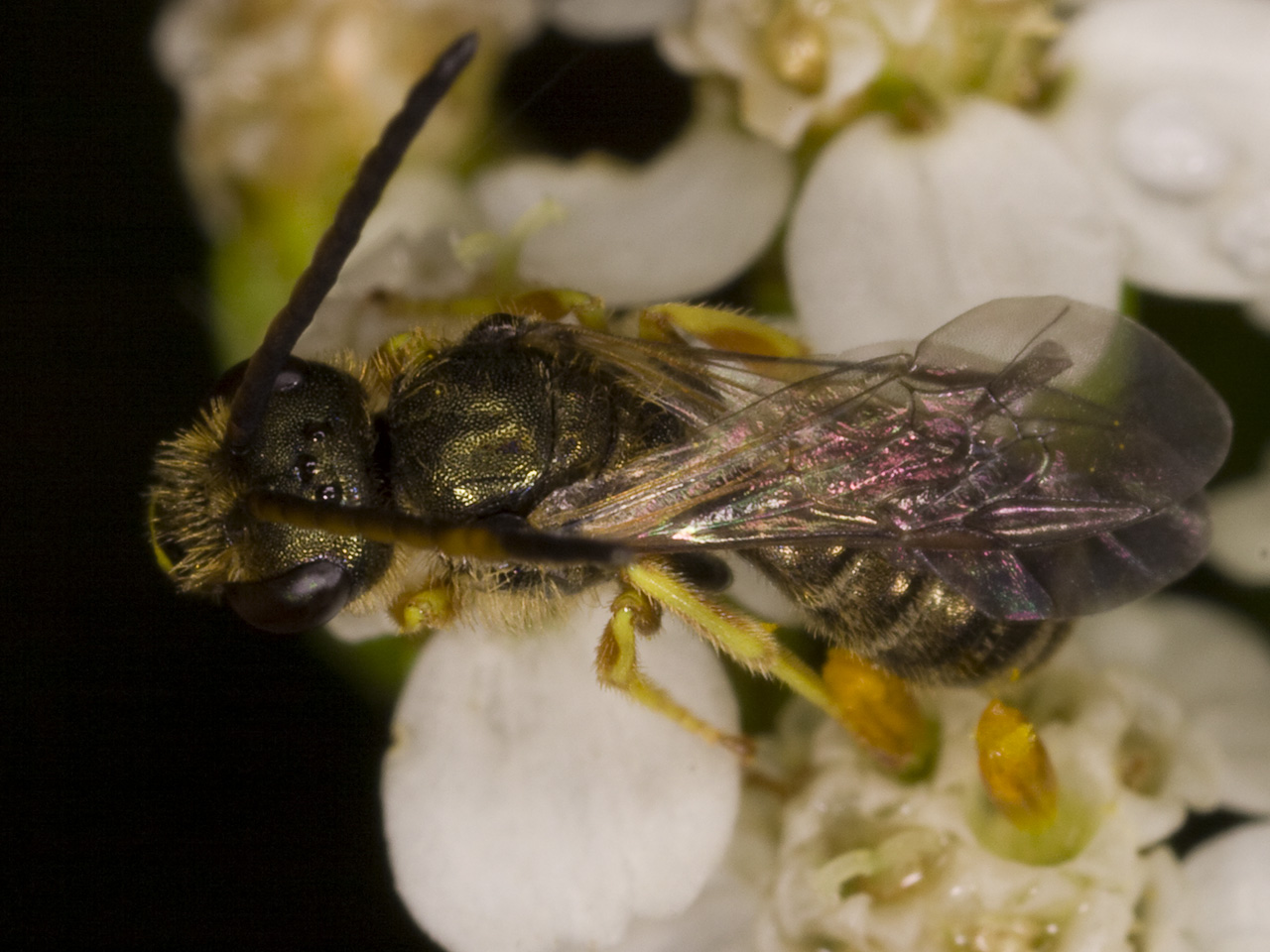
Halictus confusus male · vagabitė ♂
on Achillea millefolium (paprastoji kraujažolė)
- southern bronze furrow bee, confused sweat bee, confusing furrow bee
- Verkannte Goldfurchenbiene
- Hedevejbi, Heidebronsgroefbij
https://en.wikipedia.org/wiki/Halictus_confusus
In Europe this species could easily be confused with Halictus tumulorum and can only be reliably separated by examining the genitalia of the males; more subtle features are that fresh female H. confusus have wider pale banding on tergites 3 and 4 while males have more yellow on the joints of the hind and middle legs.
It is found in open habitats in Eurasia and North America. Halictus confusus nests in aggregations and exhibits a primitive form of eusociality, with castes that are behaviorally distinct but not morphologically different. It is a polylectic bee which feeds on a wide variety of flowers, visiting a variety throughout the season.Halictus confusus is 7 mm in length, the forewing is 5.5 mm long. Females have a greenish head and thorax, darkening to blackish on the clypeus and black on the abdomen, with metallic greenish highlights. The legs are blackish, becoming reddish distally. The head is slightly broader than long, with the eyes slightly converging ventrally and the clypeus obviously protruding. The wings are hyaline, with yellow venation, and the tegulae are yellowish anteriorly and otherwise reddish. Males are generally similar, but the mandibles, labrum, and outer third of the clypeus are yellow, the wing venation is more reddish, and the legs have a narrow outer yellowish stripe on the tibia and yellowish tarsi.
‥
0 comments
Add a comment